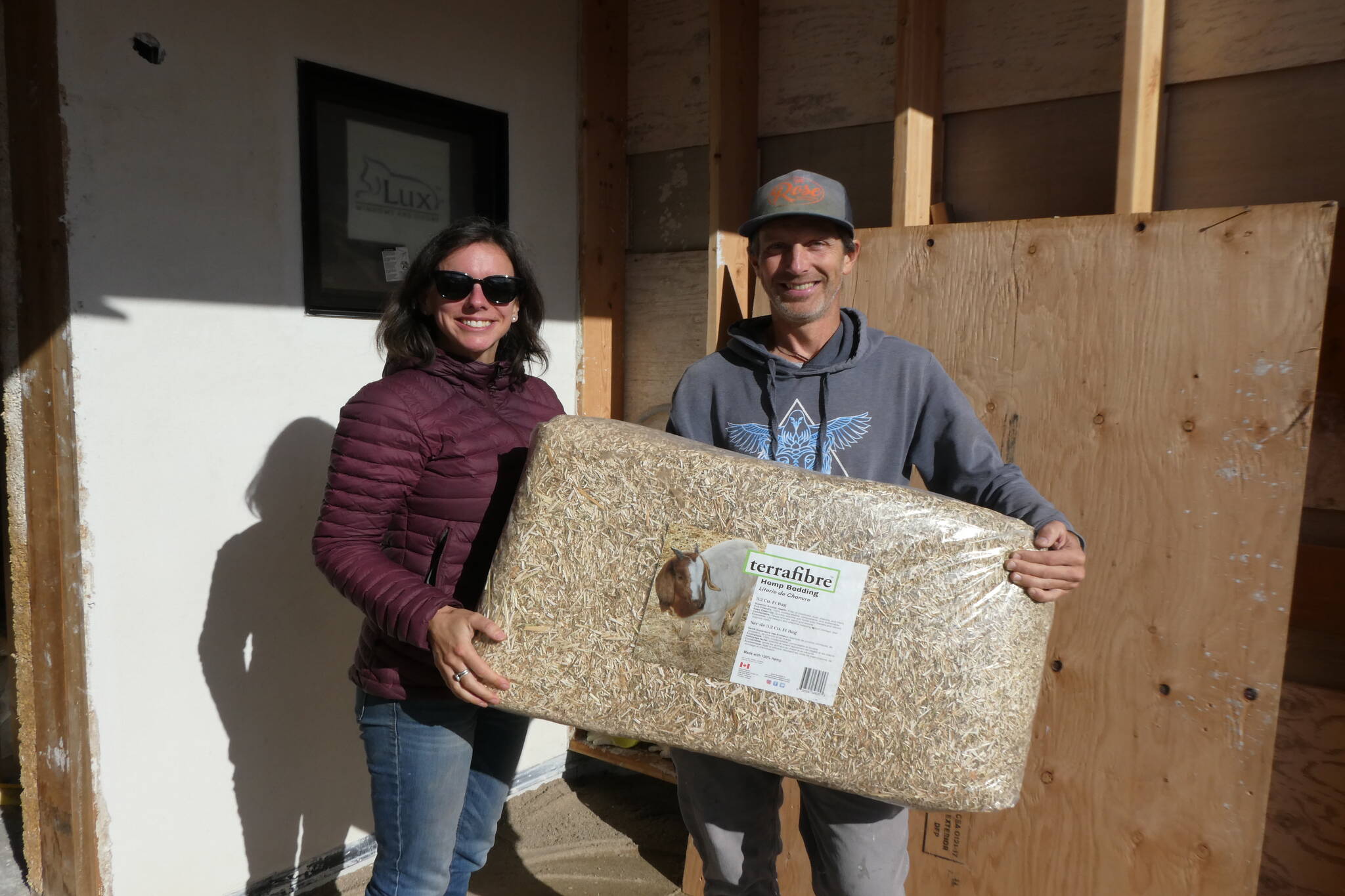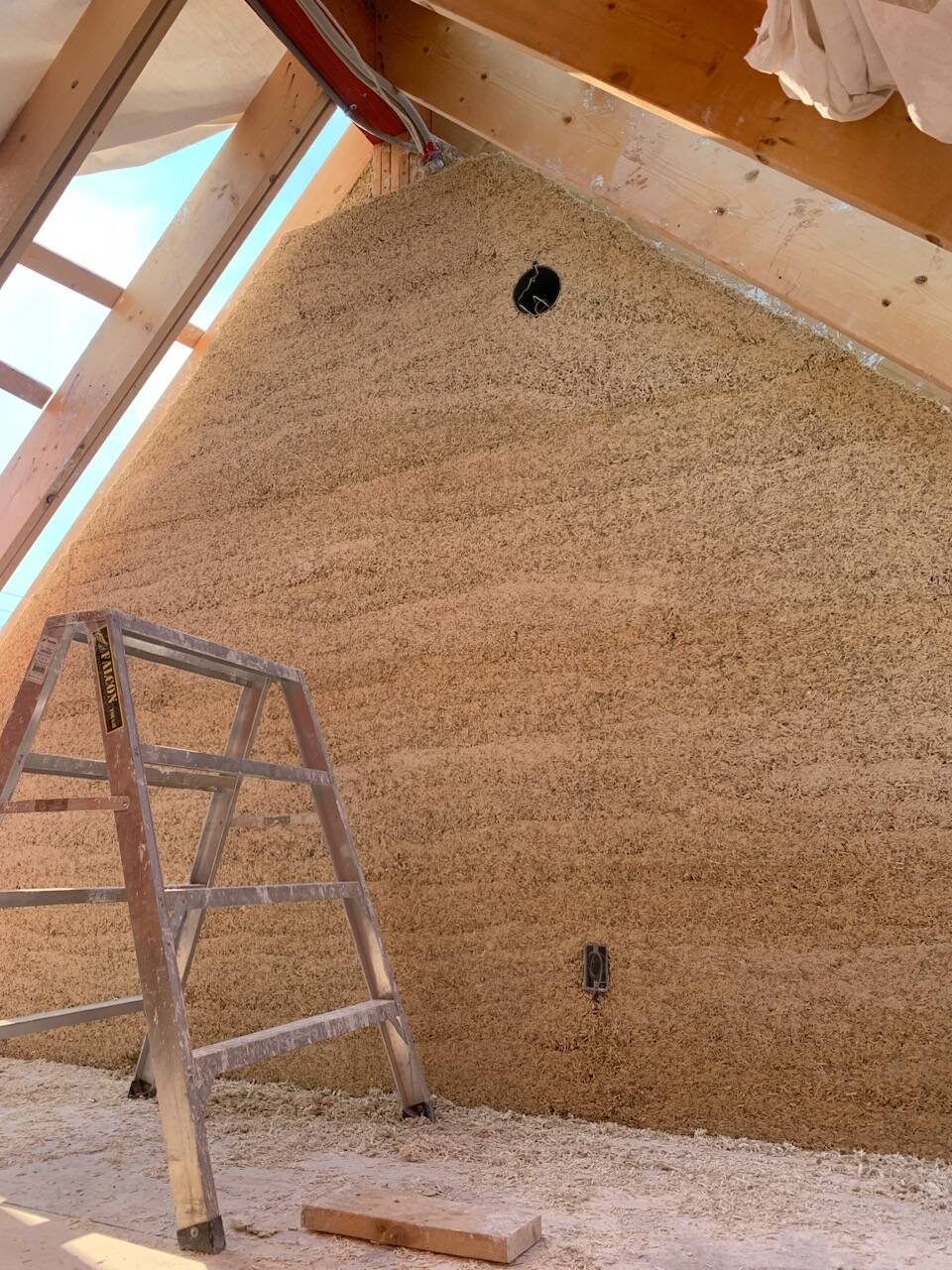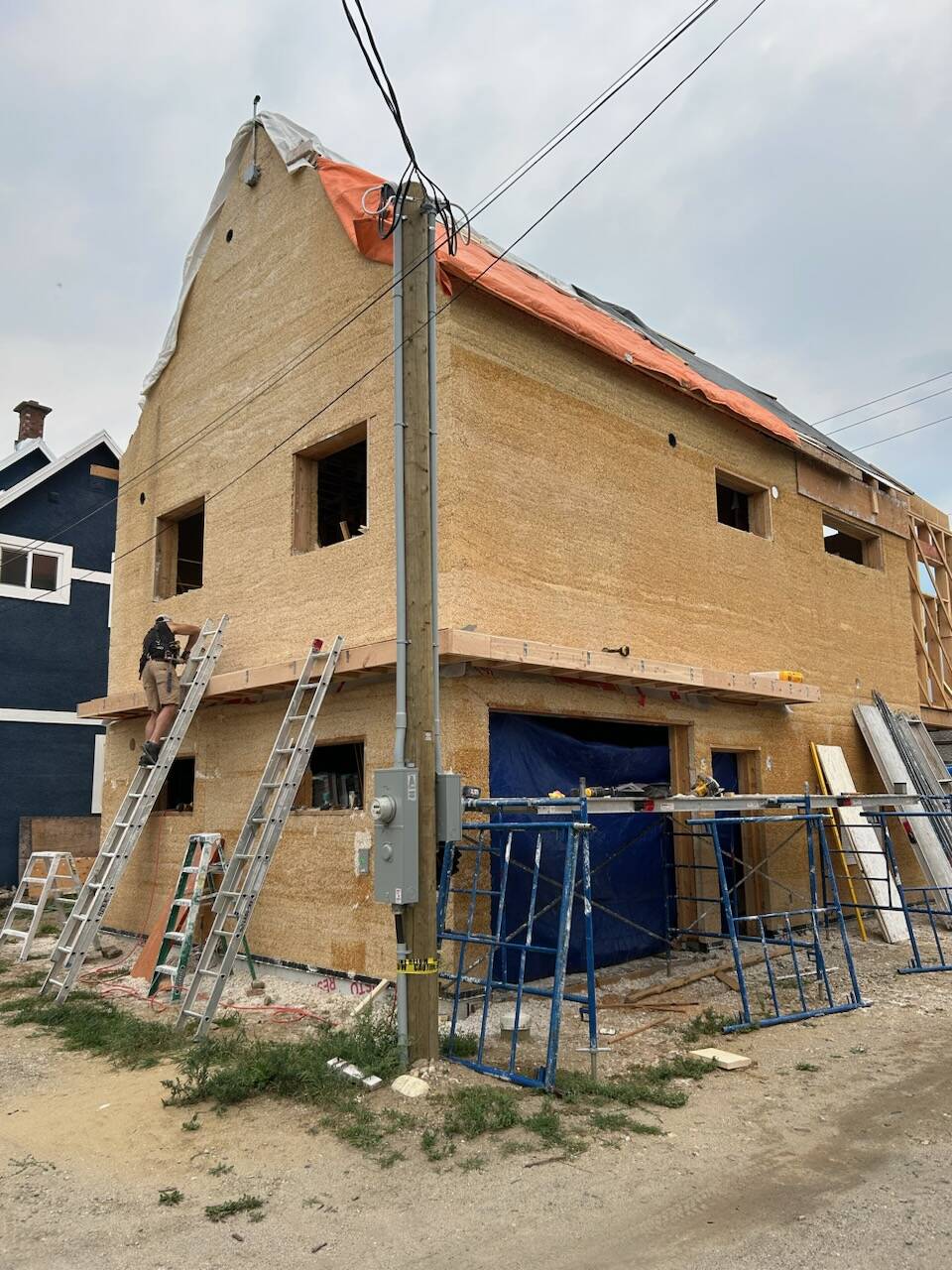Contributed by: Connor Arsenault
A recently built hempcrete house is the first of its kind here in Revelstoke and a harbinger of more climate-friendly construction methods.
Hempcrete is an alternative to traditional building methods and involves mixing the woody fibres of hemp with lime and water to make a lightweight cementitious material. It doesn’t replace structural components but is used to create walls with insulative and moisture-regulating properties. It also has great mould-resistant, pest-resistant and fire-resistant properties.
New hempcrete projects have been cropping up throughout Canada, and this growing trend has finally reached Revelstoke. This particular project came together through the collaboration and hard work of Derek Lammie and Miriam Manley.
The culmination of a long love affair with hemp, Lammie had dreamed for many years of building a house with hempcrete. Before 2000, he had a retail store on Vancouver Island where he sold environmentally friendly products like clothing, beauty products, and health products all made with hemp.
“I’m kind of like a natural-born hempster,” he said about his long history with hemp.
When Manley mentioned to him two years ago that she was interested in potentially building a house with hempcrete, the partnership was formed and the beginnings of this project came about.
The choice that Lammie and Manley made in building this hemp house was reflective of their values. With climate change upon us, reconsidering the ways houses are built has become more important than ever as we make moves toward carbon neutrality.
The construction and energy sectors are two significant contributors to greenhouse gas emissions, according to Our World in Data, a U.K.-based non-profit.
Lammie compared using hempcrete to the 100-mile diet, which was a challenge undertaken by two Canadian writers to eat only food found within 100 miles of their residence for a year.
“We’re not using all of the same traditional materials that you would in a house that is heavily manufactured in environments that are dependent on fossil fuels. A lot of traditional building products now come from as far away as Europe to be installed here.”
The hemp that they used was grown in Alberta and the carbon that was sequestered during its growth is now embedded in the house.
Cities throughout B.C. are placing a much bigger emphasis on energy-efficient homes with their building code standards.
Manley acknowledged the emphasis on energy efficiency but doesn’t necessarily want to be living in a home that is so isolated from the outside environment. Whereas traditional builds rely on HVAC systems and various machines to operate, the hemp house will provide a healthier and more connected environment. Hemp house walls are essentially able to ‘breathe’ — moderating temperature and moisture levels on their own. The insulation value of hempcrete is the same as –or higher – than traditional insulation.
When it came to building a house with hempcrete, Lammie outlined it as follows: “The first process is standard construction. You do your foundation, your slab prep, your electrical and plumbing. And then you frame the house as you would typically any normal house with standard 2” x 6” framing. The hempcrete comes in after that. We basically put forms around the traditional framing and dump the hempcrete in, tamp it down and work our way from the bottom up and basically wrap around the whole house with a 12” inch wall.”
All of the electrical and plumbing is embedded into the hemp walls in conduit.
While the process for building the house was different than a conventional house, the price wasn’t all that different.
Lammie and Manley credit the success of this project to everyone in the community and building sector who helped and supported them along the way.
The City of Revelstoke was supportive of the project and easy to work with along the way, according to both.
“Although we were offering something different and alternative, in no way did they balk at it. If anything, they were more interested and more supportive of our project because we’re doing something different.”
Lammie plans on building with hempcrete again and had no hesitation when asked if he would recommend hempcrete to others.
“I recommend it to others based on connecting with people and their values. The climate crisis that we’re in is something that we actually have to take responsibility for.”
To get the week’s latest must-read stories from the cannabis world direct to your inbox, sign up for our weekly newsletter at canadianevergreen.com. You can also follow us on Facebook, Instagram and Twitter.



